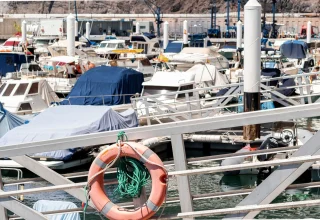Whether you are an owner-operator or you are looking to rent a flatbed trailer, there are a number of things you need to know about Flatbed Trailer Transport. These include how to calculate the weight of your freight, what regulations you need to follow, and what insurance policies you need to purchase.
Calculate the total weight of the freight
Depending on the freight company you choose, the total weight of your freight can have a big impact on your shipping costs. This includes the weight of the items in your shipment, the packaging, and the transport vehicle. If you are shipping freight internationally, you should consider the weights of the goods in your shipment to ensure that they are well-suited for international shipping.
The total weight of your freight can be a tricky thing to estimate. If you are shipping goods that are too heavy for your vehicle, you may be faced with oversize and overweight hauling fees. The weight of your freight can also vary depending on your state and region.
The total weight of your freight is calculated by multiplying the total payload weight by the volume of your freight. This calculation is one of the most important components of your bill of lading.
The density of your freight is also an important aspect to consider when shipping goods internationally. This is especially true when you are shipping goods that are more fragile or bulky than others. Density is the ratio of weight to cubic feet.
Using a freight density calculator can help you determine the density of your cargo and therefore, what type of freight class your shipment may be in. However, the density of your freight will only be important if you are shipping with a carrier that bases its freight classifications on density.
The most basic method of determining the density of your freight is to take a tape measure and measure the dimensions of the items to be shipped. A good rule of thumb is to measure the width, height, and depth of your shipment.
Tie-down points
Choosing the right tie-down points for flatbed trailer transport is important for the safety of your cargo and your vehicle. There are many options available for different loads. The type of anchor points you use depends on the weight of the cargo, the structure of the trailer, and the number of tie-downs required.
Tie-downs for flatbed trailer transport are designed to hold the load securely. The straps should be long enough to allow you to secure the load properly. The length of the straps is one of the most important factors in the design of the tie-down system.
Tie-down points for flatbed trailer transport should be secured to the front and rear of the vehicle. This will ensure the load is not shifted while you are driving. In addition, they will make transportation easier.
The working load limit (WLL) for tie-down points for flatbed trailer transport must be at least half of the weight of the load. This is determined by the manufacturer and will be printed on the product page. This will help prevent accidents and ensure that the securement devices are in good condition.
Forge steel D-rings are available in different sizes. These are forged to support loads of up to 47,000 pounds. They come in convenient packs that are easy to mount. The D-rings also include clips to allow for a more efficient loading process.
Indirect tie-downs secure heavy-duty items to the trailer interior. The straps used in an indirect tie-down system have a working load limit of half the weight of the cargo. These straps can also be used with various tie-down assemblies.
Tie-down points for flatbed truck transport require four anchor points. Each anchor point is spaced evenly for maximum security. The anchor point should be near the tire and trailer axle. This will evenly distribute the force of the tie-down and protect the ratchet straps from coming loose.

Open-deck capacity
Depending on what you need to transport, the open-deck capacity of flatbed trailer transport can vary greatly. For example, while a standard flatbed trailer can carry freight with a height of 8’6″, a 53-foot deck can handle loads up to 43 feet tall.
Open-deck capacity is the most common type of flatbed trailer transport. The main deck of a flatbed is 38 to 40 feet long. The upper deck is about 10 to 13 feet long.
There are different deck types, including double drop, sliding axle, and step deck. Sliding axle trailers are popular with construction companies and equipment rental companies. Sliding axle trailers have a winch mounted on the front, allowing the tail to drop to the ground.
Step deck trailers are two-level decks. They consist of the main deck and a second, lower deck above the tractor unit. They are a good choice for freight that exceeds the height limits of a flatbed.
Tridem trailers are a good choice for single-piece loads over 29 feet long. Tridem trailers have three axles, providing greater cargo capacity. A trim trailer can also scale to permit more cargo weight.
While there are many types of open-deck capacity flatbed trailer transport, most owners-operators choose standard flatbed trailers. They’re versatile and dependable workhorses. However, they may not be as sophisticated as other types of trailers.
The main benefit of flatbed trailer transport is the ease of loading. A forklift or crane can quickly unload freight from the top of the trailer. It’s also easy to replace the roof or sidewalls if needed. There are also no accessibility issues.
The open-deck capacity of flatbed trailer transport is great for heavy equipment, including excavators, cranes, and factory machinery. It’s also great for bulky goods, such as bulk landscaping materials.
Safety regulations
DOT regulations are meant to protect drivers from injuries. A DOT inspector will review a large truck or trailer that weighs over 10,000 pounds. These vehicles must pass an annual inspection to ensure they are operating properly. In June 2017, inspectors reviewed more than 62,000 buses and large trucks.
The safety regulations for flatbed trailer transport require that trailers are structurally sound and that they have the proper security equipment. These include cradles, locking bars, D-rings, stake pockets, and bulkheads. This equipment must be installed correctly and in good working condition. If a trailer is not secured properly, it could be damaged and result in a crash.
When loading a trailer, the driver must know the total weight of the load, which should be half the machine’s weight. If the load is going to roll, it may require chocks or wedges. The motor carrier is responsible for ensuring appropriate repairs are made. The fleet interval for repairs will vary depending on the company.
During a DOT inspection, an inspector will check the condition of the trailer and make sure it is in safe operating condition. If any defects are found, the motor carrier will need to make repairs to correct the defect. This can affect the company’s haul schedule and customer relations. If the securement is questionable, it may be better to replace it rather than pay fines for an unsecured load.
When loading a trailer, the motor carrier is responsible for ensuring the correct maintenance. This means all loading bay personnel must have adequate training in the use of tie-downs. The motor carrier is also responsible for maintaining appropriate records. If a trailer is out of service, it will affect the haul schedule and revenue.
Insurance requirements
Whether you are a trucker or transport your own personal goods, it is important to get the right amount of flatbed trailer transport insurance. This coverage can help you avoid some of the most common risks.
Depending on your business and the type of goods you are hauling, you may need more than one type of coverage. This could lead to higher costs. It is best to consider what you are hauling and evaluate your risk tolerance to determine whether you need more or less.
One of the most important types of flatbed trailer transport insurance is cargo insurance. This coverage protects you from theft and fire. It also helps you to cover other losses.
When you are transporting expensive equipment, you need to keep it safe. You also need to get regular safety inspections. You may also need to get roadside assistance. This coverage can help you cover expenses when you need to get your trailer repaired. You can also get reimbursement of up to $500.
Another important type of flatbed trailer transport insurance is liability coverage. This type of coverage covers the costs of other drivers’ medical payments and damages. It is important to get coverage that has a limit of at least $300,000 per accident. You should also get a policy with a $100,000 per injury limit.
A flatbed trailer may seem like a simple vehicle to drive, but it has many risks. If you get into an accident, you could end up with a lot of damage to your cargo and your truck. Your trailer could also be stolen. You may have to pay for expensive parts and repairing your trailer can be a hassle.










